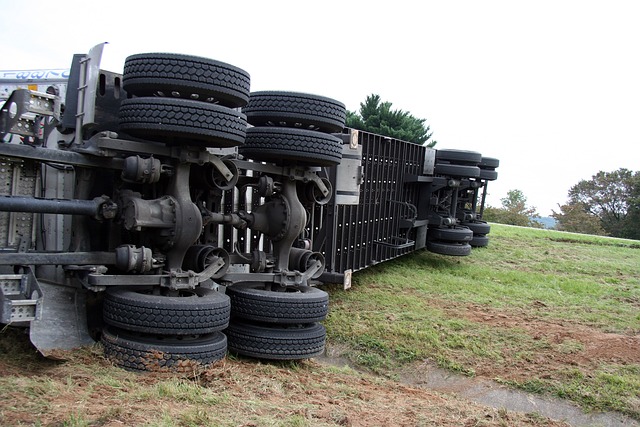When choosing a truck battery, it's crucial to match its capacity and capabilities with your vehicle's electrical demands, considering factors such as the truck's age, technological features, accessories, and the nature of its use. Key attributes to focus on include cold cranking amps (CCA) for cold starts and reserve capacity for sustained power output. The type of truck and its usage, whether it's a heavy-duty model with complex electronic systems or a smaller pickup, will dictate the battery size needed. Off-road use or extreme weather conditions can further influence battery performance, so evaluating the vehicle's alternator efficiency and charging system health is important for long-term retention of charge. Additionally, the impact of electrical accessories like GPS, driver information systems, and infotainment systems must be considered due to their significant power consumption. For heavy-duty trucks, batteries should be designed to handle the larger engines' increased power requirements and withstand daily rigors, ensuring consistent performance and reliability. Truck operators should also consider regional climates as they affect battery performance, with colder temperatures impacting cranking power and warmer climates increasing the risk of overcharging. Lastly, understanding amperage-hour (Ah) ratings and cold cranking amps (CCA) is essential for performance optimization, ensuring that the selected battery supports the truck's power needs without compromising on space or efficiency.
When selecting a truck battery, understanding the specific needs of your vehicle is paramount. This article delves into the pivotal factors that influence the ideal battery size for trucks, ensuring optimal performance in diverse conditions. From the demands of your engine’s complexity to the cumulative draw of onboard accessories, each element plays a critical role in the decision-making process. Additionally, climatic variables and amperage-hour ratings become key considerations. With a focus on truck battery capacities, this guide will help you navigate through these aspects to select a battery that aligns with your truck’s specific requirements for reliable, long-lasting power.
- Understanding Truck Battery Capacity Requirements: An Overview
- The Role of Engine Size and Complexity in Determining Battery Needs
- Assessing the Impact of Accessory Load on Truck Battery Selection
- Climate Considerations for Choosing the Right Truck Battery Size
- Navigating Amperage-Hour Ratings and Cold Cranking Amps for Optimal Performance
Understanding Truck Battery Capacity Requirements: An Overview

When selecting a truck battery, it’s crucial to consider the vehicle’s specific electrical system demands and the types of journeys it will undertake. A truck’s battery capacity requirements are influenced by various factors, including the model’s age, the features it incorporates, and the power needs of its accessories and electronics. Modern trucks often come equipped with advanced technology such as GPS, enhanced driver information systems, and sophisticated safety features that all require a reliable energy source. The cold cranking amps (CCA) and reserve capacity are key specifications to consider; CCA measures the battery’s ability to start an engine in cold conditions, while reserve capacity indicates how much power the battery can supply at 25 amperes for a minimum of 90 seconds without falling below 1.75 volts per cell.
Moreover, the type of truck and its intended use play a significant role in determining the ideal battery size. For example, heavy-duty trucks with air conditioning, refrigeration units, or other power-intensive features will have different capacity needs compared to smaller pickup models. Additionally, the frequency and duration of trips, especially those involving off-road conditions or extreme weather, can impact the battery’s usage patterns and thus its size. Truck owners should also consider the alternator’s efficiency and the charging system’s overall health, as these factors affect how well the battery holds and retains a charge over time. Understanding these aspects ensures that truck operators choose a battery that aligns with their vehicle’s electrical load and provides reliable performance for all intended operations.
The Role of Engine Size and Complexity in Determining Battery Needs

When assessing the battery size required for a truck, one pivotal factor to consider is the engine’s size and complexity. Larger engines typically consume more electrical power to operate efficiently. The starter motor and alternator, which are integral to the engine’s starting and charging systems, draw significantly more current than those in smaller vehicles. Consequently, a truck with a larger engine will necessitate a battery capable of delivering higher amperage to meet these demands. Additionally, the complexity of modern trucks’ electronic systems further increases power requirements. Advanced safety features, enhanced infotainment systems, and numerous diagnostic ports all draw on the vehicle’s electrical supply. These systems are often standard in larger trucks and require a robust battery to ensure consistent performance and reliability. To accommodate these diverse needs, truck batteries must be engineered with greater capacity and durability compared to their passenger car counterparts. This ensures that the battery can handle the rigorous daily demands of professional drivers or those who undertake long journeys, making the choice of a suitable truck battery paramount for maintaining optimal performance on the road.
Assessing the Impact of Accessory Load on Truck Battery Selection

When selecting a battery for heavy-duty trucks, understanding the impact of accessories on power demands is crucial. The modern truck is equipped with an array of electrical accessories that can significantly influence the size and capacity of the battery required. These accessories range from basic functions like headlights and wipers to advanced systems such as GPS, refrigeration units, and in-cab entertainment systems. Each additional accessory increases the power draw from the battery, necessitating a unit with greater ampere-hour (Ah) capacity to ensure consistent performance without failure. Truck operators must consider not only the number of accessories but also their individual power requirements when determining the optimal battery size. For instance, a truck equipped with a sleeper cab and a refrigeration unit will have different battery needs compared to one with just a basic sound system. The starting and charging systems also draw substantial power, which must be accounted for in the total load calculation. It’s imperative to match the battery capacity to the expected accessory load to prevent underperformance or early battery failure. Consequently, truck fleets that frequently use trucks with varying electrical loads should opt for larger batteries to accommodate peak demands and ensure reliability across different operational scenarios.
Climate Considerations for Choosing the Right Truck Battery Size

When selecting the appropriate truck battery size, climate considerations are paramount due to their impact on battery performance and longevity. Extreme temperatures can significantly affect a battery’s ability to hold and discharge energy. In cold climates, the chemical reactions within lead-acid batteries, which are common in trucks, slow down, reducing the ampere-hour (Ah) capacity and leading to a diminished cranking performance when the vehicle is started. To mitigate this, heavier construction and larger capacities are often required in northern regions to ensure consistent operation during winter months. Conversely, in hotter environments, overcharging can occur if the charging system isn’t properly regulated, potentially shortening the battery’s lifespan and impairing its function. Therefore, selecting a truck battery that is well-suited for the prevailing climate conditions ensures optimal performance and extends the service life of the vehicle’s power source. It’s crucial to consult with a professional or refer to the truck manufacturer’s recommendations to determine the ideal battery size that can handle the specific climatic challenges faced in the truck’s operational environment. Truck owners and operators should consider these climate-related factors when choosing a truck battery to ensure reliable starting and consistent power supply regardless of weather conditions.
Navigating Amperage-Hour Ratings and Cold Cranking Amps for Optimal Performance

When selecting a truck battery, understanding amperage-hour (Ah) ratings and cold cranking amps (CCA) is crucial for ensuring optimal performance. Amperage-hour ratings are a measure of the energy a battery can deliver over a specific period. For heavy-duty trucks that require substantial electrical loads, particularly during cold starts, a higher Ah rating ensures the battery can meet the demands of the vehicle’s systems without depleting its charge too quickly. It’s essential to match the Ah capacity with the truck’s power requirements; a larger Ah rating typically means a larger battery, which can be both an advantage and a consideration for space constraints within the vehicle.
Cold cranking amps (CCA) are a measure of the battery’s ability to start an engine in cold temperatures. A higher CCA indicates that the battery can deliver more electrical power at zero degrees Fahrenheit, which is particularly important for trucks operating in colder climates. The CCA should be high enough to overcome the compression and resistance of the engine’s starter in freezing conditions. Truck batteries with sufficient CCA ratings will ensure a reliable start every time, which is vital for safety and operational efficiency. When selecting a truck battery, one must consider both the Ah rating and the CCA to balance the energy output with the size and weight constraints of the vehicle. Properly assessing these factors will lead to a truck battery that provides the necessary power without compromising on performance or space.
selectng the appropriate truck battery is a critical decision that hinges on various factors, including engine size and complexity, accessory load, and climate conditions. Understanding these requirements ensures optimal performance and longevity for your vehicle’s electrical systems. Truck owners must consider the amperage-hour ratings and cold cranking amps to match their truck’s needs precisely. By taking into account these elements, you can select a truck battery that will reliably support your vehicle’s operations, whether it’s for daily commuting or demanding work environments. It’s a strategic move to invest in the right truck battery, as it directly affects your vehicle’s functionality and safety on the road.



